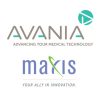Let’s face it, even in a world filled with innovations we couldn’t have imagined a decade or two ago, the medical technology industry has struggled to keep pace with some other industries. Now, we are in the midst of a once-in-a-lifetime pandemic that is actually serving as a call to action for many organizations to build faster and build better.
But faster and better brings challenges for the companies and engineers designing and manufacturing medtech products. Teams feel immense pressure to decrease time-to-market, ensuring their company’s product is first to make an appearance. First to market can mean “disruptor” status—and the cache that comes with that distinction.
I’m tired of hearing about faster and better being the only way to get to market. It’s a myth, because it is based on assumptions about what the regulatory requirements management process involves during product development. And it could crush great teams.
We can all relate to the risk that moving too quickly in the process can lead to mistakes. What’s more: In this industry, or any safety-critical industry, making that mistake can put people’s lives at risk.
As I look ahead to 2021, the biggest trend I see for medical device development will be a keen focus on quality. Here’s why that’s true—and what your teams can do to prepare.
Regulation Is About to Experience an Upheaval
In what Deloitte has dubbed the most significant change to medical device regulation in nearly three decades, the new European Medical Device Regulations (EU MDR 2017/745) implementation date is fast approaching. Initially scheduled to go into effect in May of this year, the European Parliament and the Council of the EU adopted a proposal to extend the transitional period to May 26, 2021. And, if this year has taught us anything, “pandemic time” feels two-times faster and May will be here before we know it. The new regulation, which emphasizes patient safety, traceability, and transparency—key aspects under the quality umbrella—will impact all medical device developers as they are required to comply. It will prioritize fundamental changes throughout the entire device lifecycle and is expected to provide better, more comprehensive regulatory guidance.
A big portion of the MDR will focus on increased traceability and labeling for each device, including keeping detailed records of the unique identification number (UID) card, which is new for all developers. With the process for this becoming more rigorous, it is vital that product development groups have an easy way to capture and call on that information. Manually maintaining these details with a document like an Excel sheet is possible, but makes the process cumbersome, slow and prone to manual error. A better approach is a requirements management platform that lets teams trace data, upward and downward decomposition, and present it in a clean way makes exporting it to a design history file (DHF) simple.
Medical Device Recalls on the Rise
Medical device recalls are on the rise this year with Stericycle’s latest “Recall Index 2020 Edition 2” stating recall activity exceeded “300 recalls for the first time since Q2 2018.” What’s further, is safety issues were noted as the highest contributing source. This demonstrates the growing complexity of device development and risk points, as well as the active regulatory enforcement for failed device testing. For engineering teams under pressure to bring products to market quickly, balancing the inherently intricate regulatory environment, can be a lot to handle. This is where mistakes start to happen—mistakes that are magnified for companies that haven’t modernized their approach to requirements management.
Medical device compliance is achievable with the right, well-documented product lifecycle and real-time collaboration tools. This is especially true for systems that are already aligned with industry standards, making traceability a simple process. Often they will come equipped with frameworks where industry regulations are inputted, saving precious set-up time and ensuring development can begin right away.
For any medical device company seeking to improve the development lifecycle of their products, simplify compliance and speed-time-to market in 2021, they can’t dismiss quality. Simply put, there’s too much on the line. From bottom-line impact to potentially life threatening implications, it is time to stop thinking about the next bigger and better thing. Let’s start making the best product possible the first time around.







